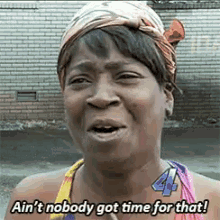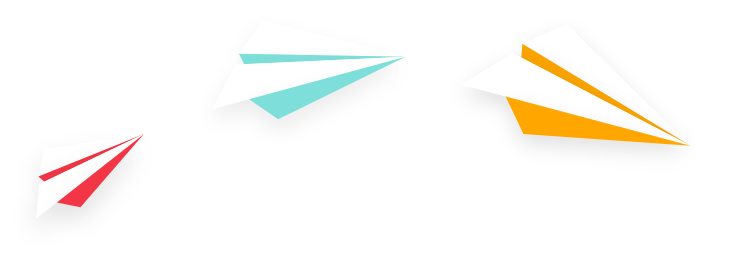Hey there, small business owner: I hear you. You’re ready to scale your business but lack resources in both funds and manpower to support growth.
You need more customers and know your business needs to be advertising online and on social media where these new customers are every day. But, you don’t know where to start. I feeeeel your pain.
You’re wearing a lot of hats, and funds for advertising and outsourcing work are in short supply. You want to make a big splash with a tiny cannonball.
Well, guess what? I have just what you are looking for. It may not be a cannonball, but its impact is even bigger and better (wait for it, wait for it…).
It’s an upside-down sales funnel.

You heard me. It’s precise. It’s targeted. And when applied to online paid media, it delivers ROI without spending a fortune. Let me show you how.
What Exactly is Paid Media?
Let’s start by differentiating between different forms of online media.
Paid Media - This includes promoting your business through sponsored social media posts, display ads, paid search results, video ads, pop-ups and other sponsored multimedia.
Many businesses also use Search Engine Marketing (SEM) and PPC, which involves bidding on keywords that people search in Google, Bing, etc., so your business shows up when they search. Paid media is an effective opportunity to expand your brand reach and get more traffic to your website, but it does come at a cost.
Owned Media - This is any form of online content placed on channels that your business owns and has control over. Great examples of this include blog articles and special promotions you place on your website or post on your social media channels.
This content organically draws new customers to your website and online channels for free. The downside is that it does take time and may involve an investment in website updates, writing blog articles, SEO optimization and more. Don’t get me wrong, it’s one of the best long-term online investments you can make for your business. But it’s going to take time to get there.
Earned Media - Cue your raving fans! Earned media is the word-of-mouth generated by your fans and customer base. It’s highly effective, as people trust other people before they will trust a brand.
While we can’t necessarily control these conversations, there are ways to influence it.
For example, you can launch an email campaign to encourage happy customers to leave reviews on Google, Facebook and Yelp. It’s also important to monitor all reviews and respond to feedback from your customers.
How Do I Use Paid Media Without Spending A Fortune?
I hear you, I hear you! You’re saying: but I still don’t know where to start. That all sounds expensive, and let’s face it ...

I am here to tell you that paid media can be extremely efficient and effective for small businesses, and you don’t need to spend a fortune.
You can do this by flipping your sales funnel. This means you start by advertising to your “bottom of funnel” - your existing customer base and those most engaged when visiting your website and following you on social media channels.
If you only have the time and capital to do one thing, use retargeting to efficiently focus on growth from your existing customer pool and most engaged prospects. In fact, acquiring new customers costs five times more than retaining existing customers!
Use retargeting to send ads directly to users who have already been on your website and social channels. Target customers who have already purchased from you, as they are the ones who are most likely to purchase again.
You’ll drive revenue and learn what works and doesn’t work on an already-engaged audience. You’ll also be able to see the attributes of your current customer base and can use that to reach new audiences who have similar attributes. With that knowledge, you are ready to spend more, diversify your tactics and continue to build up your funnel.
Tell Me More about the Sales Funnel

What is all this sales funnel talk? Here’s the skinny:
Top of funnel: This is your entire target audience. You want to get as many people as possible into your top of funnel to educate them on who you are and nurture those who are interested in your company. This is the widest part of the funnel with the largest audience, but not all of these people will eventually engage or purchase from you.
Middle of Funnel: This contains engaged potential customers. They are following you on social media and visiting your website. These people aren’t ready to make a purchase decision, but you have narrowed in your audience on those who are most interested.
Bottom of Funnel & Retention: This is the cream of the crop. These people have been on your website and social media channels, and they have compared you to competitors. They are ready to make a first-time purchase or are happy customers ready to purchase again.
For long-term growth, you want a fully-built-out funnel with three full stages. You want to bring new potential customers into the top of the funnel and nurture them through the middle of funnel to a sale. You want to be represented on multiple channels with multiple touchpoints. It takes time, but it’s a proven methodology that top companies continue to use today.
Let’s Recap
When it comes to a quick-win strategy involving paid media, consider flipping that funnel for a bottoms-up approach. You can gain quick results with a budget you can afford.
The key is not throwing lots of cannonballs randomly. Take a targeted approach that aligns with your goals and provides an optimal return on investment.
As you scale your business, you can grow your paid media and other top-of-funnel, middle-of-funnel and bottom-of-funnel strategies to create a long-term growth plan for your small business.


